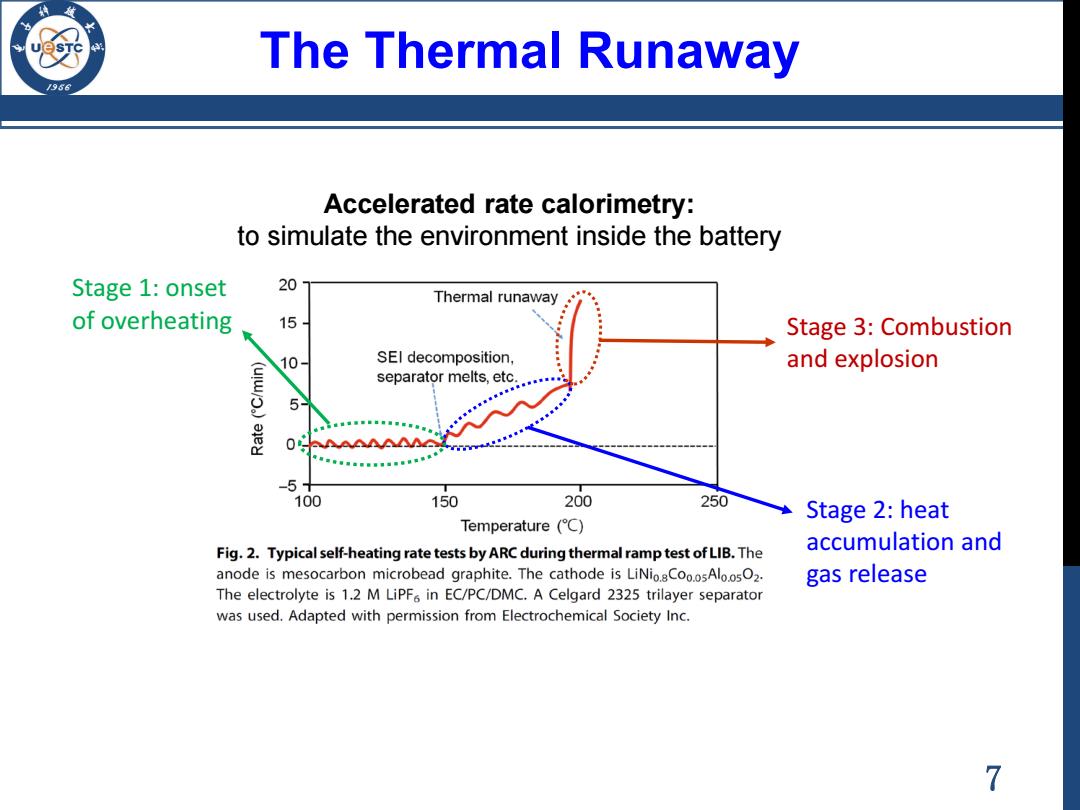
The Thermal Runaway /986 Cathode- Anode Battery temperature increases Fires,explosions Separator and liquid electrolyte Stage 2:Heat accumulation and Stage 1:The onset of overheating gas release process Stage 3:Combustion and explosion Dendrite formation SEI decomposition (>90C) Oxygen Separator flaws Separator melt(>~130C) Overcharging Anode exposed(C.H gas release) Cell crush Liquid ↓ electrolyte combustion Temperature further increases ↓ Heat Fuel Big current Cathode decomposition,O2 release EC+DMC(1:1) (LiC002>~180C) Vapor pressure:4.8 kPa@R.T. Flash point::25℃±1C@1.013bar 6
The Thermal Runaway Dendrite formation Separator flaws Overcharging Cell crush Big current SEI decomposition (>90oC) Separator melt (>~130oC) Anode exposed (CxHy gas release) Temperature further increases Cathode decomposition, O2 release (LiCoO2 > ~180oC) EC+DMC(1:1) Vapor pressure: 4.8 kPa@R.T. Flash point: 25 oC±1 oC@1.013 bar 6

The Thermal Runaway 1956 Accelerated rate calorimetry: to simulate the environment inside the battery Stage 1:onset 20 Thermal runaway of overheating 15 Stage 3:Combustion 10 SEI decomposition, and explosion separator melts,etc. 5 0 MMG -5 100 150 200 250 Stage 2:heat Temperature (C) Fig.2.Typical self-heating rate tests by ARC during thermal ramp test of LIB.The accumulation and anode is mesocarbon microbead graphite.The cathode is LiNio.sCoo.osAlo.osO2. gas release The electrolyte is 1.2 M LiPF in EC/PC/DMC.A Celgard 2325 trilayer separator was used.Adapted with permission from Electrochemical Society Inc. 7
The Thermal Runaway Accelerated rate calorimetry: to simulate the environment inside the battery Stage 1: onset of overheating Stage 3: Combustion and explosion Stage 2: heat accumulation and gas release 7